Traveling with a pet to Colombia is straightforward and hassle-free if you follow and understand the required steps. You can bring your dog, cat, or other household pets with minimal requirements. These are easier to fulfill because Colombia has all the requirement easy explained and with multiple ways to comply with them from outside the country.
That’s why we wanted to create this comprehensive, up-to-date guide for expats traveling to Colombia with pets. We understand that navigating the process can be challenging, especially when it comes to understanding the current Colombian laws. Many readers from Medellín have inquired about this topic, and we aim to make it easier for them to travel with their pets.
However, be wary of many English-language websites, as they often provide inaccurate or outdated information regarding pet travel to Colombia. We follow the latest guidelines from ICA (Instituto Colombiano Agropecuario), the Colombian authority responsible for ensuring a smooth experience for you and your furry companions when entering or exiting Colombia.
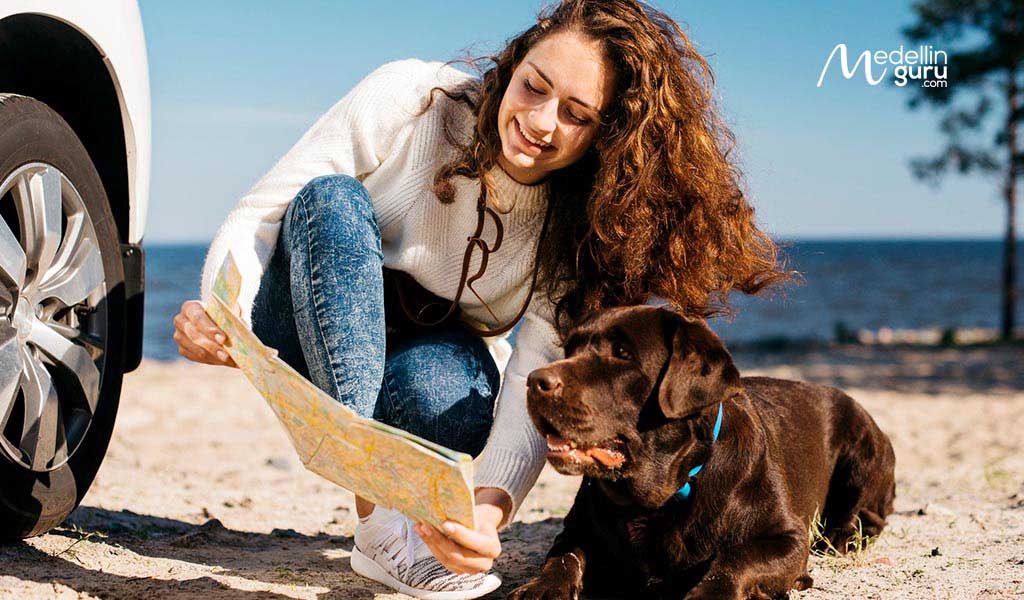
What Documents Are Needed to Travel with a Pet to Colombia?
Expats who wish to travel to Colombia with dogs and cats, either as accompanying baggage or as cargo, need to follow a specific process. To make this guide as clear as possible, we’ll break it down into two sections: what you need to do before traveling and what to do upon your arrival at the airport.
Before Arriving in the Country
First, you must register as an ICA user. After this step, you will receive your username and password to access the system via email. This is required to start the application for the Sanitary Inspection Certificate (CIS), which authorizes your pet’s entry into the country.
If at the time of registration the system throws an error message or says that you are already registered, you must contact: [email protected]
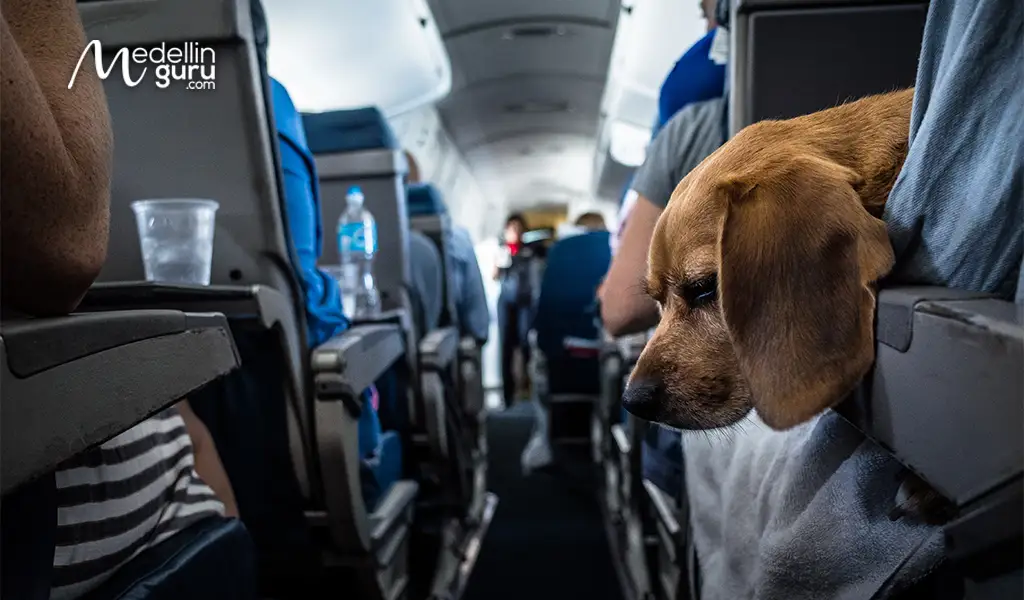
With the assigned username and password, you can access the SISPAP (Sanitary Information System for the Import and Export of Agricultural and Livestock Products) and apply for the Sanitary Inspection Certificate (CIS).
To apply for the Sanitary Inspection Certificate (CIS), you must first enter SISPAP with your username and password and complete the required information about the passenger and the pet. Then, you must make the required payment to submit your inspection request. Finally, print the CIS application and proof of payment to present them when entering the country.
If you are traveling with pets of different species (dog and cat), you must submit a separate request for each one. However, if your pets are of the same species (dog or cat), you can submit a single request (up to 10 animals per request).
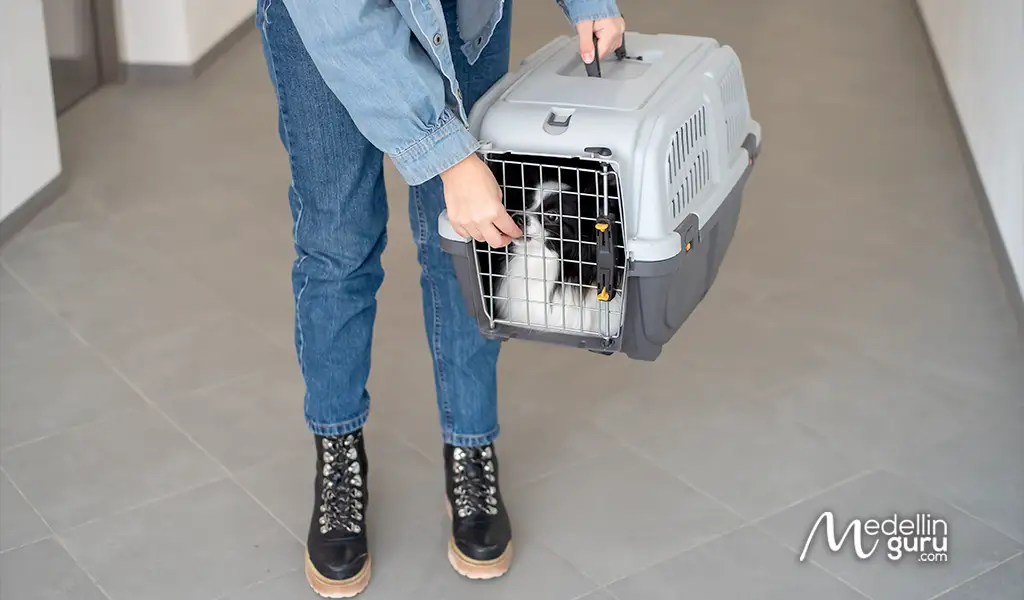
When preparing for your arrival in Colombia with your pet, you must ensure that you have all the necessary documents ready in addition to the ICA registration and everything previously described. Make a checklist of the following key documents:
-
Veterinary Health Certificate
Within 10 days of travel, an accredited veterinarian from the country of origin must complete a veterinary health certificate for your pet. If you are traveling from the U.S. or Canada, the veterinary health certificate must also be endorsed by the USDA in the U.S. or the CFIA in Canada.
In the U.S., this veterinary health certificate is the APHIS Form 7001. Canada has a trilingual Animal Health Certificate in English, French and Spanish that should be used. In the U.S., the USDA has APHIS Veterinary Services Endorsement Offices in all the states where you can get health certificates and rabies certificates endorsed. Note that this endorsement should come from the state you are traveling from to Colombia.
You send your veterinary health and rabies certificates to the USDA, and they are returned to you within 48 hours (there have been cases when they take more time, so beware with the deadlines). Keep in mind the 10-day limit. You don’t have much time to send this and get it back, so use express mail. Canada's CFIA works similarly and endorses and returns health certificates within 48 hours.
This Health Certificate confirms the pet's characteristics, including species, breed, sex, age, coat color, and any notable signs. It certifies that the pet is free from infectious, contagious, and parasitic diseases, has received internal and external antiparasitic treatment within the last 60 days—complete with product details and administration dates—and is in sanitary conditions suitable for transport.
-
Valid Vaccination Certificate
It includes the name of the vaccine, lot number, date of administration, and expiration date for the following diseases:
Dogs: Rabies, Distemper, Canine Hepatitis, Leptospirosis (canicola and icterohemorragiae), Parvovirus, Coronavirus, Parainfluenza.
Cats: Rabies, Feline Panleukopenia.
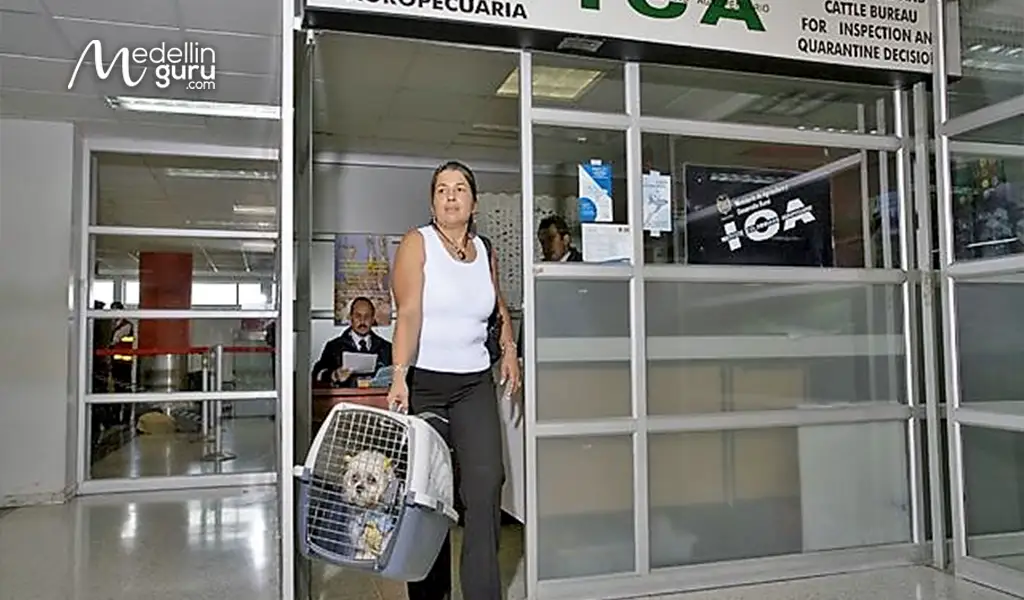
Furthermore, it is worth emphasizing that another important task you should handle personally before traveling to the country is to have your immigration status in order, whether you are entering as a tourist with your pet or because you want to apply for a Colombian visa to settle in the country. Remember that with our visa and immigration expert partner, expatgroup.co, you can resolve any questions and carry out your legal procedures easily and confidently.
When Arriving in the Country
When you arrive in Colombia, make sure to declare your pet. Upon arrival, get your luggage and proceed to the ICA office with your luggage, pet, health certificate, and vaccination record. All ports of entry into Colombia (airports, border entries, and ports) will have an Instituto Colombiano Agropecuario (ICA) office.
There, the issuance of the Health Inspection Certificate (CIS) will take place, where the following process will be carried out by the ICA:
-
Document Inspection:
The following documents will be validated:
a) Submit a printed copy of the application for inspection and issuance of the Sanitary Inspection Certificate (CIS), along with the proof of payment, which were processed through SISPAP.
b) Original Sanitary Certificate: Issued or endorsed by the official sanitary entity of the country of origin (with original or electronic stamp and signature) with a date of issue no more than ten (10) calendar days before the pet’s entry.
c) Valid Vaccination Certificate: This will include the vaccine's name, lot number, date of administration, and expiration date.
-
Inspection of your Dog or Cat:
The ICA inspector will verify that the pet matches the documents presented and that it is in suitable conditions to enter the country.
-
Issuance of the Sanitary Inspection Certificate (CIS):
If the documents you have are accepted and the animal passes the physical inspection, a Sanitary Inspection Certificate (CIS) will be issued, and the animal will be allowed entry.
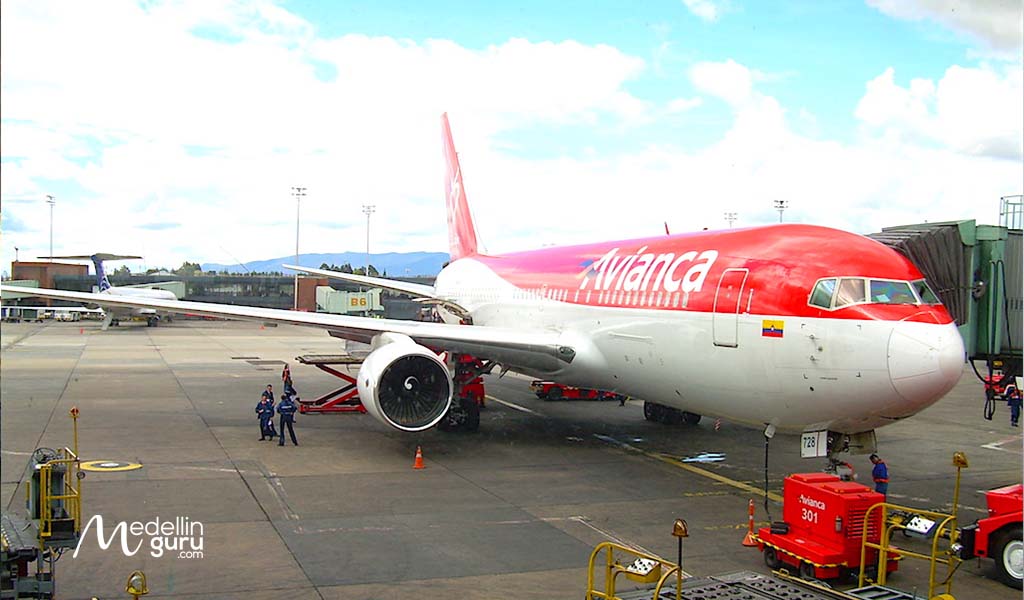
Additional Information
Please take this additional information into account, as it is important in case your pet does not pass any of the airport inspections or if you have been unable to complete the application for the Health Inspection Certificate (CIS) through SISPAP.
-
Inspection Not Satisfactory:
If the inspection is not satisfactory and according to the health status of the pet, one of the following sanitary measures will be taken: Retention, home quarantine, re-shipment, or humane sanitary sacrifice. The owner or person in charge of the pet must assume the costs and responsibilities of the sanitary measure applied.
Pets that don't meet Colombia's importation requirements must undergo post-entry home quarantine, which includes two visits from an ICA official. The cost is 575,900 COP.
-
Direct Payment at the ICA Office
Due to the inability to request the Sanitary Inspection Certificate (CIS) via SISPAP, you can obtain it directly at the ICA office at the entry point. To do this, you will need to bring your pet along with the necessary physical documents, and the payment for the certificate must be made at the office. Please keep the following in mind:
Only debit and credit cards from CREDIBANCO, MASTERCARD, VISA, and AMERICAN EXPRESS are accepted, as cash payments are not permitted. The cost is nearly 50,000 COP (depending on the case) from Monday to Friday between 8 am and 5 pm. Other hours have a surcharge, except at El Dorado International Airport in Bogotá, which operates 24 hours and does not charge extra for extended hours.
In addition, you can see the complete list of requirements for importation of dogs and cats into Colombia on the ICA website here (in Spanish).
-
Warning: Several Dog Breeds Are Not Permitted in Colombia
The ban on importing certain dog breeds into Colombia is established in Ley 1801 de 2016 (Código Nacional de Policía y Convivencia), Article 132, mentioning that several dog breeds are not permitted to be bought in Colombia. The following dog breeds are considered potentially dangerous and cannot be brought to Colombia:
1. American Pit Bull Terrier
2. American Staffordshire Terrier
3. Argentine Mastiff
4. Brazilian Mastiff
5. Bull Terrier
6. Doberman
7. Japanese Mastiff Tosa
8. Neapolitan Mastiff
9. Pit Bull Terrier
10. Rottweiler
11. Staffordshire Terrier
11. Any crosses or hybrids of the above breeds
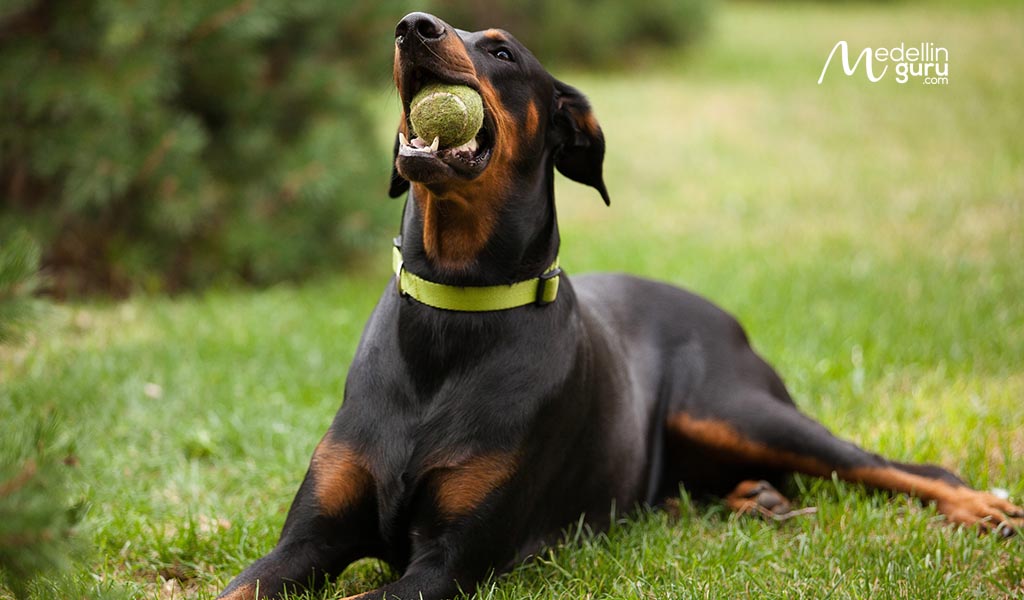
Also, remember, as additional information, that one of the main requirements to enter the country with your pet or apply for a Colombian visa as an expat is good health insurance. With us, you can acquire the best international health policy to cover you and receive special benefits—such as pet coverage—from the most comprehensive plans, ensuring peace of mind for both you and your pet.
Medellin Guru Insurance Service
The insurance agency we partnered with meets the requirements for Colombian Visa Applications
Check Airline Policies Before Traveling with a Pet
When planning to travel with your pet, it’s crucial to not only to adhere to Colombian laws but also to recognize that airlines, as private entities, have the authority to determine which pets and breeds they allow on board and the specific travel procedures associated with them. Understanding and complying with these regulations is essential to ensure a smooth journey for you and your furry companion.
Therefore, it’s important to know that airlines have a limited number of spots available, and these can fill up quickly. Be sure to call and reserve a space for your pet well in advance. Most airlines also require at least 24 hours’ notice for pet travel. Keep in mind that there will be additional charges for bringing a pet along. Additionally, consider using calming aids for your pet during the journey.
Depending on their size, pets can travel either in the cabin or as air cargo. Traveling with larger dogs can be more challenging as not all airlines accommodate them. Always check the specific pet policies of the airline before booking your flight.
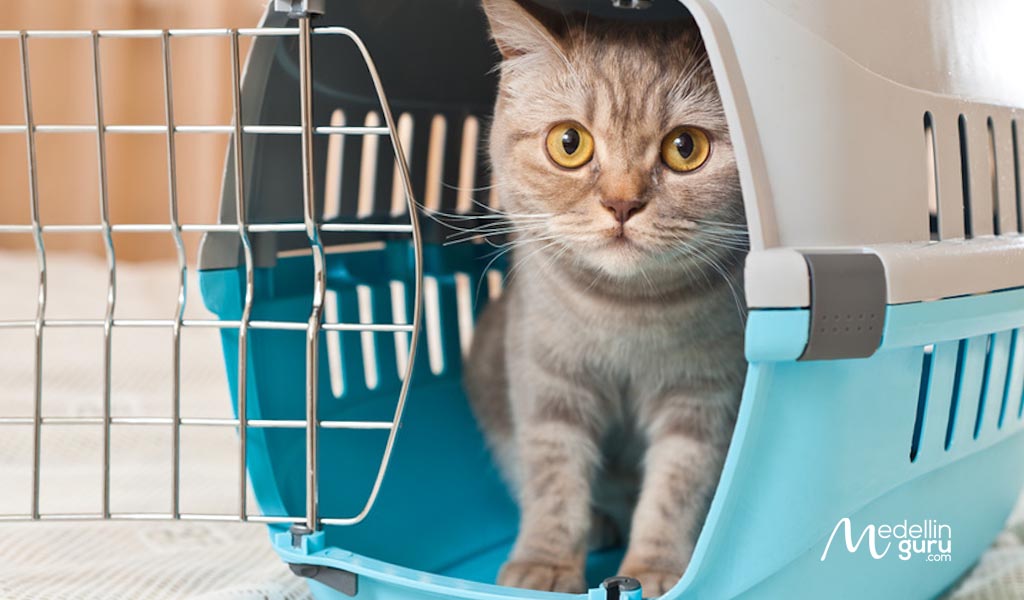
Pet Rules of International Airlines that Fly Non-Stop to Medellín
The following are the pet rules of several airlines with international non-stop flights to Medellín in Colombia:
American Airlines
Unfortunately, American Airlines does not allow pets to travel in the cabin on flights to or from Colombia. However, they offer the American PetEmbark service through American Airlines Cargo to transport pets that do not qualify to travel in the cabin or as checked baggage.
The fees for transporting pets with American Airlines Cargo vary based on the trip details, animal size, and crate dimensions. Visit their official website for the latest information on their pet transport policies.
Avianca
Yes, you can fly with your pet in the cabin or in the hold, provided you meet the transport requirements. You can take dogs and cats over 4 months old, including emotional support and service dogs.
When flying your pet to Colombia, you must have an original health certificate stating that your animal is fit for travel. This certificate cannot be older than 10 days and must confirm that your pet is free of infectious and parasitic diseases, with no fresh or healing wounds. It should also include details like species, identification, breed, sex, age, coat, vaccination plan, and a vaccination certificate from a veterinarian with their professional registration number.
If you’re flying from the U.S. to Colombia, your health certificate must be stamped and signed by the USDA’s Animal and Plant Health Inspection Service (APHIS). See Avianca’s website for more information about travel with a pet.
Copa Airlines
Copa Airlines allows small dogs and cats as cabin pets, replacing your carry-on baggage. Pets can travel on flights any day of the week, from Monday to Sunday. Please note that traveling with pets is not permitted in Business Class. Service and emotional support dogs can be transported under specific regulations through the Copa Pets service.
To ensure a smooth journey, make sure to document your pet at least 48 hours prior to departure or at the time of ticket purchase via the Sales Offices or Call Center. See Copa’s website for more information about traveling with a pet.
JetBlue
JetBlue permits pet carriers in the cabin of up to 17″L x 12.5″W x 8.5″H and a maximum weight of 20 pounds (10 kilograms), including the pet and carrier. Also, JetBlue charges a pet fee of $125 each way. And JetBlue does not transport pets as checked baggage. See JetBlue’s website for more information about travel with a pet.
Spirit
Spirit permits pets traveling in the cabin with a limit of a pet carrier of 18″ L x 14″ W x 9″ H with a maximum weight of 40 pounds (18 kilograms) for the pet carrier and pet. And Spirit permits only four pet carriers per flight and Spirit charges a pet fee starting at $110 each way. Also, Spirit does not transport pets as checked baggage. See Spirit’s website for more information about travel with a pet.
In addition, Bogotá has non-stop flights from the U.S. by Delta and United Airlines. Delta will transport larger pets as cargo and United Airlines also transports larger pets as cargo.
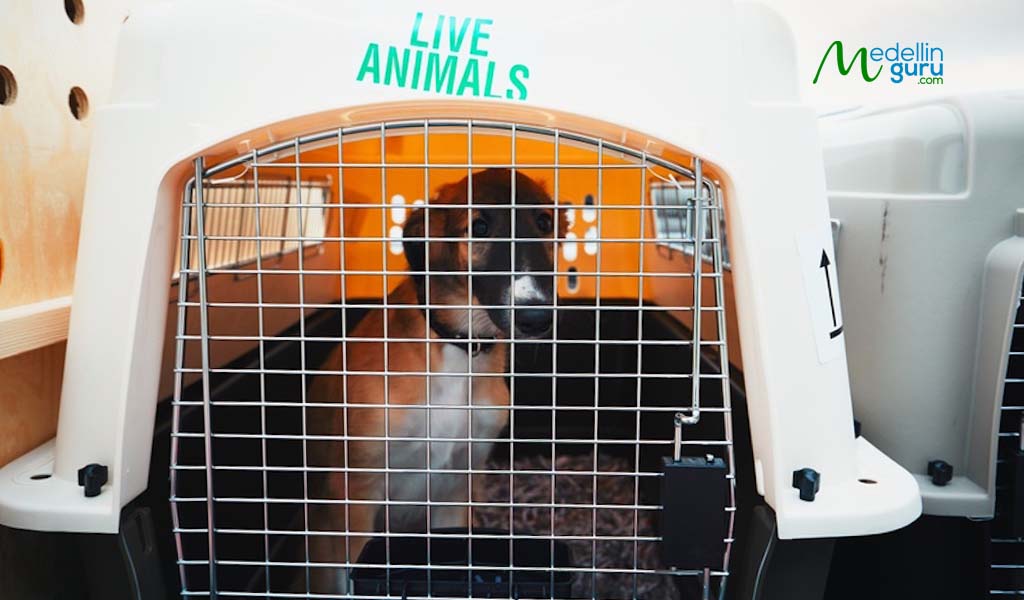
Frequently Asked Questions about Traveling with a Pet to Colombia
To travel to Colombia with your dog or cat, follow these basic steps:
- Register with ICA and apply for the Sanitary Inspection Certificate (CIS) through SISPAP.
- Get a veterinary health certificate issued within 10 days of travel.
- Prepare a valid vaccination certificate with all the required information.
- Ensure antiparasitic treatment was given within the last 60 days.
- Check airline policies and book a space for your pet in advance.
- Declare your pet upon arrival and go to the ICA office for inspection.
No import permit or microchip is required, but documentation is essential.
Yes. If your pets are the same species (e.g., two dogs), you can submit a single inspection request for up to 10 animals. If they are different species (e.g., a dog and a cat), you must submit separate applications.
No. Colombia does not require pets to be microchipped for entry.
It must be issued within 10 calendar days before your pet’s arrival in Colombia.
Yes, but only in exceptional cases. You can process the Sanitary Inspection Certificate (CIS) directly at the ICA office at the port of entry. Be sure to bring printed documents and pay on-site (credit/debit card only).
Yes. Colombia prohibits the entry of certain breeds classified as dangerous, such as the Pit Bull Terrier, Rottweiler, and others. Mixed breeds or hybrids may also be restricted.
No. Each airline has its own policy. For example, American Airlines does not allow pets in the cabin to/from Colombia but does offer cargo transport. Always check with the airline before booking.
Medellin Guru's safety and security series
Safety is the biggest concern of foreigners visiting Colombia or planning to move to Colombia. So, we have a series of 18 popular articles about safety and security in Colombia:
- Is Medellin Safe? U.S. Embassy Colombia Talks About Security for U.S. Citizens
- Emergency Directory Guides to Ensure Your Safety in Colombia
- Is Colombia Safe? Colombia Security and Safety Tips
- Is Medellín Safe? Medellín Security and Safety Tips
- How to Travel and Live in Colombia Safe as a Foreigner
- Colombia Travel Health Insurance: A Guide for Expats and Nomads
- How to Obtain 2 Years of Health Coverage for a Colombian Visa
- Migración Colombia alert: No entry for foreigners with Angel Watch reports
- What are the Safest Neighborhoods in Medellín and the Aburrá Valley
- 5 Best Neighborhoods in Medellín: A Guide to Choosing a Neighborhood
- New Airbnb Policies for Hosts in Colombia
- Medellín Robbery: Expat Experience Being Robbed at Knifepoint
- Colombia Gun Laws: Is it Legal to Have a Gun in Colombia?
- Scopolamine: The Realities of Devil’s Breath in Colombia
- Colombia Protests: Tips for Foreigners to Stay Safe During Protests
- Is Bogotá Safe? Bogotá Security and Safety Tips
- Is Cartagena Safe? Cartagena Security and Safety Tips
- Is Cali Safe? Cali, Colombia Security and Safety Tips
- Is Santa Marta Safe? Santa Marta Security and Safety Tips
- Is Pereira Safe? Pereira, Colombia Security and Safety Tips
- Is Manizales Safe? Manizales Security and Safety Tips
- Is Bucaramanga Safe? Bucaramanga Security and Safety Tips
- Is Barranquilla Safe? Barranquilla Security and Safety Tips
Medellin Guru's comprehensive visa and passport series
The Colombian visa changes that went into effect in October 2022 were significant. So, on the Medellin Guru site, we have a comprehensive series of visa articles that are kept up-to-date and should answer most visa questions. These articles include:
- Colombia Visa Guide: Ultimate Guide How to Get a Colombian Visa
- How to Obtain a Colombian Visa with Up-to-Date Info – an overview of all the Colombian visas
- Popular Colombian Visas for Foreigners: Which Visa is the Most Popular?
- Coronavirus Impacts on Colombian Visas and Tourist Visas
- Visa Agencies: A Guide to Visa Agencies in Medellín and Colombia
- 9Common Colombian Visa Mistakes: How to Avoid Them
We have looked in detail at the nine most popular Colombian visas used by foreigners:
- Digital Nomad Visa
- Retirement visa
- Marriage visa
- Investment visa
- Business Visa
- Resident visa
- Work visa
- Student visa
- Visitor visa
Also, we have looked in detail at three additional Colombian visas, which are less popular for foreigners:
- Rentista visa (annuity visa) – for foreigners with a fixed income
- Beneficiary visa – for relatives of visa holders
- Expertise visa – for professionals
In addition, we have a guide to Colombia tourist visas and how to extend a tourist visa. Also, we have a guide to renewing U.S. passports in Colombia and a guide to obtaining a Colombian passport.
Furthermore, we provide information about travel insurance that meets the insurance requirement for Colombian visas. And we have a guide to how apply for a cedula extranjeria in Colombia and a guide to using notaries in Medellín and Colombia. Finally, Medellin Guru has partnered with a visa agency to offer Colombia visa services.
All of our Colombia visa articles are up to date (2024) and constantly receive updates in 2025.
The Bottom Line: Travel with a Pet to Colombia – Travel with a Dog or Cat to Colombia
Traveling to Colombia with your pet is totally doable—with the right prep. Make sure to get your Sanitary Inspection Certificate (CIS), gather all required documents, and check both airline rules and Colombian laws (especially breed restrictions). Plan ahead, stay informed, and your pet will be ready to explore Colombia with you.
Need help with your visa or pet travel prep? Reach out to our trusted partners at expatgroup.co and start your journey with peace of mind.
Medellin Guru Social media
Be part of our community. Find out about news, participate in events and enjoy the best of the city.






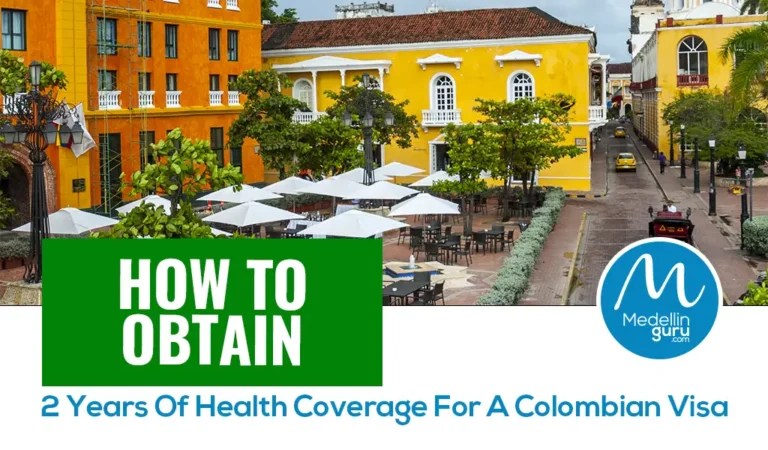



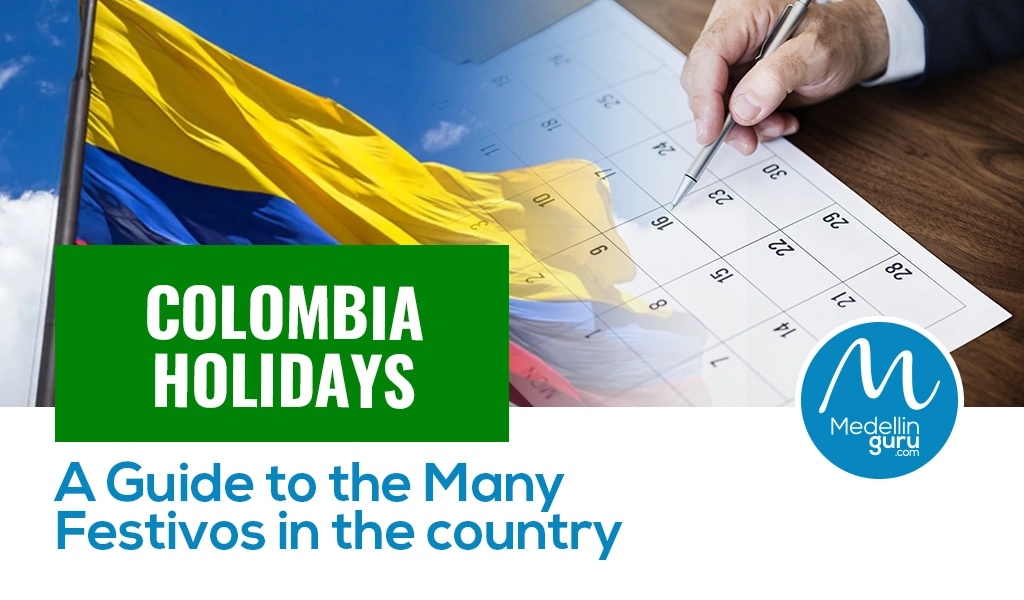























69 thoughts on “How to Travel to Colombia with a Pet: Dog or Cat – Guide 2025”
I’m trying to travel to Colombia in a couple of weeks and I encountered an issue but not answer. ICA ask for the Coronavirus vaccine, as I understand this vaccine is not approved or required in the states. So is kinda difficult to get that vaccine. In the ICA page said that if the pet doesn’t have a vaccine you need like an official proof of this. Like a vet note? What can I do in this case? Does ICA can quarantine my dog because of that?
According to the ICA, if vaccination against diseases other than rabies, such as the coronavirus in your case, is not carried out in the country of origin, the owner or responsible party must present the respective official sanitary service certification specifying that said vaccination is not performed. In this case, the pet’s entry will be allowed without the need for home quarantine. Thus, you must work with a USDA-accredited veterinarian to complete and sign the health certificate. This veterinarian must present the certificate to the USDA Endorsement Office
in the US, getting a health certificate endorsed by the USDA takes way longer than 48 hours, more like a week or more. Recommend updating that section to reflect the current state of USDA vets and time frame so someone doesn’t go to their vet 2 days before and not be able to take their pet or reschedule as they didn’t give enough time for processing.
There is a lot of conflicting information about breeds that cannot be brought into Colombia. Ley 746 de 2002 and subsequent regulations list the breeds you mentioned as “razas caninas potencialmente peligrosas” (potentially dangerous dog breeds) and require the owners to carry insurance, keep the dog muzzled in public, and always securely leashed. However it does not prohibit the importation of these dogs. I can find no reference to any dog breed being prohibited for importation in the ICA (Instituto Colombiano Agropecuario) regulations. petrelocators gives the same answer you do, I’m not sure if you relied on them. Can you point to an official source siting this ban? Thanks.
Hello Ed. We hope you’re doing well.
The ban on importing certain dog breeds into Colombia is established in Ley 1801 de 2016 (Código Nacional de Policía y Convivencia), Article 132. It prohibits the importation of Staffordshire Terrier, American Staffordshire Terrier, Bull Terrier, Pit Bull Terrier, American Pit Bull Terrier, and their hybrids.
For official reference, see the full law at this link.
The Instituto Colombiano Agropecuario (ICA) enforces these regulations, even if their guidelines mainly focus on health requirements.
Hello, Thought I would follow up on my post with the info I have found. My sister in law spoke in person to an ICA rep at El Dorado in Bogota. As long as the animal in question is a service animal with the appropriate documentation from the traveller’s doctor the animal can enter. Banned breeds ARE allowed as service animals. The ICA rep confirmed that a Staffordshire pitbull terrier can enter as a service animal. I plan to make the trip this summer and I’ll update the post.
Any update on this ? Did they let you in without an issue ?
What about for birds?
Never have been asked about birds so haven’t researched this.
We recommend asking on the big Medellin Expat Facebook group – https://www.facebook.com/groups/159461177529433
Hi Jeff,
We are Canadian citizens and when we fly home we will have been in Santa Marta for 5 months with our 4kg Jack Russell terrier.
She came here with all the required shots and inspections and we have the papers. When we fly back to Canada (in March 2020) do we need any paperwork from ICA for her to leave Colombia? I have a contact for CFIA in Canada so will see what they need, which seems to be minimal so far, but my Spanish is not very good and I have trouble following the speedy talking here.
All help would be appreciated.
Thank you
Bill
Hey thanks for info. I have service dog and visiting family for some time in Colombia. I’m worried about bringing him back to the USA. Will I have to put him through a quarantine of some kind if so it would not be possible for me to go. Thanks. Who should I call for the updated rules.
They did remove her from the kennel but no behavioral assessments.
I went through the process on October 2, 2019 (last week) in the Bogota airport. The USDA document doesn’t need to be translated and it doesn’t need an apostille. You deliver it by hand at the ICA office along with the vaccinations report and rabies certificate. The whole process took me 10 minutes.
Did ICA remove your dog from the kennel or perform any behavioral assessments?
Hi, do you happen to know if the dog must be neutered if it’s a male? Also I have a 6 year old male pitbull that I am trying to move from US to Colombia in early 2020, will I have problems doing so? Does Colombia have breed restrictions? He has no history of aggression and current on all shots and is healthy.
No doesn’t have to be neutered. And see this list of breed restrictions in the article above. Several dog breeds are not permitted to be bought to Colombia. Pit Bulls are not permitted.
Hi,
With regards to the breed restrictions, do you have any information on a Staffordshire pitbull terrier entering as an emotional support animal for a stay of 2 weeks?
We have checked with United and the dog can fly in the cabin as an ESA with no problems. My niece wants to visit Colombia with her ESA.
Sorry, Colombia has a breed restriction listed in the article including hybrids. No hybrid that is Staffordshire and Pit Bull Terrier would be permitted.
I am worried about this too as one of my dogs physically resembles a pitbull. From what I’ve seen the answer is yes. Colombia prohibits any line of pitbull or mix from entering the country. I’ve seen this on multiple sites although the actual Colombian agricultural department is vague on many requirements. I think alot depends on the breed identified on the USDA certification. Also be aware that pit bulls are considered a snub-nosed breed which are banned on most airlines. My dog is also a chow mix and I had to go to a new vet to have her reclassified as a Shepherd so that she can fly. What port are you planning on entering in Colombia? I do have an email address to the agricultural inspectors in Medellin if you would like that?
Hi Devon,
Were you able to have a resolution for this? – I am having a similar issue. Please share any additional info you have on the matter.
Hi Ashley,
Were you able to have a resolution for this? – I am having a similar issue. Please share any additional info you have on the matter
Hi Milton. I had the vet reclassify her breed to a Shepard mix. I had to take her to a new vet to do this and played stupid as to her breed. She doesn’t have a snub nose which would’ve prevented her from flying so the vet was willing to classify her as a herding dog. As for entry into Colombia the agricultural officer didn’t even look at my dogs. She only looked at the paperwork. I flew into Medellin so it might be different at other locations. Hope this helps but if yours has a snub nose you’re probably out of luck.
Who do I mail the USDA certification to after receiving it? Your article makes it sound like I have to send it to a Colombian authority before travel? I see nothing about having to send my USDA certification prior to travel for Colombian approval prior to travel on the ICA website.
Also… does the translation of documents need to be official or can my Colombian wife do it?
Thanks!
No, you don’t send anything you bring with you to the ICA office at the airport. According to ICA’s website, these documents must be original and translated to Spanish if not in Spanish. As far as I know no official translation is needed and two expats I talked to said the documents didn’t need to be translated. And there is no need for an apostille.
Thank you very much.
coronavirus is rare in Canada. What if my pet has all except for this one? Will my pet be detained? Also what is the exam by ICA? I’m afraid that they’ll scam me and say my dog failed the exams to charge me the 500 pesos more. Unfortunately, I am always scam in Colombia despite the fact that I was born there.
As it says in the article ICA will inspect your docs and perform a physical inspection of the animal to verify the health condition of the animal. And you should get the coronavirus vaccination if entering Colombia from countries other than Ecuador, Peru and Bolivia.
I will be traveling to Medellin on the 30th of next month with my dog. Her rabies runs out on the 4th of next month. So my question is, if I take care of her shot prior to the 4th will I be ok with the 30day requirement for the shot prior to entry? Thanks in advance
To enter Colombia with a pet, your cat or dog reportedly must be vaccinated for rabies more than 30 days before travel to Colombia and before the vaccination expires.
Ok what would happen if I brought her anyway
Hard to tell – may not be a problem, but if your arrive and the ICA office determines does not meet the requirements, must comply with a period of post-entry home quarantine in Colombia, which includes two follow-up visits by an ICA official and a cost of over 500,000 pesos, as it says in the article.
Hi Jeff, you do a great job of keeping up with questions. I plan to obtain a real estate-oriented visa to Colombia in the very near future as I just finished my TESOL certification and I have a dog and a cat. My dog is an emotional support animal so I should be able to get him on the plane from the US, and I have a friend who will bring the cat behind me. I really appreciate your information! Thanks again
Very helpful.
Hi there,
looking to bring my puppy from the US to stay with me. However, I have hit a snag and l looking to get resolved asap. He’s 2 1/2 months old, and he has all of his shots required at this age and for ready to travel, except it looks like Colombia wants him to have a rabies shot before he’s arrives.
Unfortunately, they don’t give rabies shots until 4 months old and then he would have to wait an additional 30 days as well. I read online that if under 3 month, he wouldn’t have to get a rabies shot but if planning to come to Colombia, he would have to be quarantined and visited by officials until he’s of age to get the shot, there in Colombia.
Does anyone know if this is true? Has anyone been through this process before?
Searching the internet for immediate answers. Thanks so much.
Hi Michael, did you ever find information on this? I’m in the EXACT same situation.
Just what I was looking for. Thanks for sharing this,
An extra question about once you arrive in Medellin with a pet. Are they allowed on public transport? What about a small dog in a carrier bag that is zipped up?
Good question. Pets like dogs and cats can be taken on the Medellín metro system on Monday to Friday between 9:00 am and 3:00 pm and on Saturdays, Sundays and holidays between 9:00 am and 12:00 noon. The pet must go in a crate, container or cage whose maximum measures are 60 cm wide, high and deep, which must be located on the floor and be solid enough to prevent it from escaping.
hi, thanks for taking the time to manage this site – i have a stafforshire terrier and was told i can get a waiver for her to enter the country from an informal call to the agency that manages animal entry – i have attempted to hire an attorney to help with this paperwork and also other paperwork (i am a Canadian with US businesses and a Colombian fiancee) and have had little luck – i see you list a few resources on this page https://medellinguru.com/colombian-visa/ but i was wondering if you have any tips for me to hire someone that is proactive- thanks again.
Greetings Jeff – Much appreciation here for your wonderfully informative site. I’m wondering what dog owners recommend in terms of the kinds of rentals that lend themselves to a happy experience for all concerned – pet, owner, neighbors. . Are there rentals with courtyards that allow you to ‘walk’ your dog (& clean up after of course) without going out on the street, for instance? What about pet deposits in rental contracts? And are there many casita type rentals for solo women expats?
A few rentals have courtyards or other areas to walk dogs. And no pet deposit in rental contracts that I am aware of – I have had pets for over five years with no pet deposits. A few places have casitas but aren’t only for women expats.
Amazing Information Sir, Thank you for sharing it with us.
Thanks for the tips
Ten days ago I travelled with my 34-lbs Brittany (Spaniel) and my 46-lbs English Cocker Spaniel via Copa Airlines. They travelled in the temperature-controlled and pressurized cargo hold. I’m grateful to have my dogs with me during my 3-month stay here in Medellín. Having said that, I’m here to tell you that making these arrangements was extremely complicated, stressful and super-super expensive. I mean, crazy-expensive!…
Most of the information in this blog post fits my experience. But, in my experience, this post is most useful for those who have a pet small enough to ride in the cabin. For dogs of medium size, the only practical options between the U.S. and Medellín are Copa and, to a far lesser extent, Avianca; because Avianza doesn’t fly pets over 44 lbs. American Airlines isn’t an option–period–because of the type of aircraft they use to fly between the U.S. and Medellín. For whatever reason, American disqualifies pets from traveling as cargo on the only type of aircraft they use to serve this area.
So for dogs 44 lbs or over, Copa is the one and only option. My dogs and I flew from LAX to MDE through Panama City. Keep in mind that there are just a few points-of-origin for flying pets as cargo. I think that Copa’s options include San Francisco, Miami, Orlando and Chicago; but don’t quote me on that.
Once you arrive at MDE with your dogs, be prepared for several hours of bureaucracy. It took us about 2.5 hours to get through all of it, and we had everything perfectly in order. The delays included the fact that ICA is located off-site in a facility currently under construction. Further, DIAN needs to get involved for some reason (and charge you a minimal amount) and then there’s also the paperwork associated with the airline/shipper verifying the pickup. While complaining about the time/dis-organization involved for pick-up, we were told that it usually takes 5 hours to claim a pet. So be prepared.
Painful as it was (and I’ve not shared all the pain-points with Copa) I hope to do it again. In the future, I plan to have the pets sent ahead of me and picked up by a trusted friend and associate who is great at dealing with situations like this. Then I’ll follow immediately upon the pets safe arrival and transport to my home in Medellín. The reason for this is that Copa requires that you drop the pet off only 2.5 to 3 hours before the flight, and frankly they were extremely disorganized. Because of that, I didn’t leave the drop-off facility until about 2 hours before the flight. At LAX that is simply not enough time. Had I not been flying business class, with priority status at check-in and security, I probably would have missed the flight. Therefore, I think the most secure method is to stay behind 12 to 24 hours to make sure all goes well for my pets, then follow them in.
If I have a service dog with me. Will I also been out through the same interrogation and pain?
Hi!
During Christmas, we’re travelling with our medium sized dog (20lbs) from Vancouver, Canada to Barranquilla, Colombia. To be honest, I am a bit unsure of the process of returning my pet back to Canada. Do I need to get another health certificate in Colombia to be able to get back to Canada with my pet?
I’d appreciate your response if you have any information
See this site that has Canada pet travel information – https://www.pettravel.com/immigration/canada.cfm.
I always get afraid when people travel with their pets.
Thank you..very useful information
How are all of these dogs so cute. I can’t even deal.
American Airlines doesn’t appear to have any flights to Medellín that allow live-animal transport in the cargo hold. All their direct flights form the US to Medellín air on an Airbus, which they report they do not use for live-animal transport.
I’m wondering what airlines have flights between the U.S, and Medellin, which allow the transportation of dogs in the cargo holds.
The article says that Avianca permits pets weighing up to 44 pounds (20 kilograms) in the hold for flights of less than four hours with a charge of $150 from the U.S. Avianca has flights to Medellín from Miami.
Thank you. After several hours of research, and a lot of inaccurate information from the customer service reps, that appears to be the only option from the United States for dogs that can’t ride in the cabin.
I’m going to Medellin on Thursday and my dog just had all her vaccinations updated today, including rabies. Can she still travel?
You need health and rabies certificates for your dog. Dogs and cats must be accompanied by a health certificate issued by a USDA Accredited Veterinarian and endorsed by USDA APHIS Veterinary Services within 10 days of travel. The rabies vaccination certificate must accompany your pet and the health certificate to Colombia.
THANKS I JUST WANT TO CHANGE PLANES IN PANAMA DON’T EVEN WANT TO LEAVE THE INTERNATIONAL DECK IT WILL BE NICE IF WE CAN ITS A LONG STORY
THANK YOU SIR DO YOU HAVE ANY INFO ON TRAVELING THRU PANAMA WITH BIRDS
According to https://www.pettravel.com/immigration/panama.cfm, to bring your pet bird with you to Panama, you must have an import permit. This permit is issued by Panama’s National Environmental Authority (ANAM).
ANY FIRST HAND EXPERIENCE MOVING BIRDS I READ THAT UNDER NO CIRCUMSTANCES BIRDS CANNOT GO THRU PANAMA
Hi Ed, according to this https://www.aphis.usda.gov/aphis/pet-travel/by-country/pettravel-colombia, Pet birds must be accompanied by an import permit issued in advance by Instituto Colombiano Agropecuario (ICA). Upon arrival into Colombia, the birds will undergo home quarantine for at least 21 days under the supervision of a veterinarian from ICA.
Great report. We are moving from Panama to Medellin in December with our two dogs that will be in Cargo on Copa. BTW we shipped them in Cargo on Copa from LA to PTY over 3 years ago and was very impressed with Copa Cargo.
Thanks for the ICA info at the airport.
Cheers!
Hi John, thanks and happy that you found the article helpful. Several readers asked for up-to-date information about travel with pets to Colombia, as so much in English is out of date about Colombia on the Internet.
Hello. What exactly do you mean by CoronaVirus vaccine? I have a service dog with full vaccines and rabies shots with health certificate. Where and how do I find a coronavirus vaccine?
Ask your vet. Canine coronavirus is not the same as COVID-19 – see – https://vcahospitals.com/know-your-pet/coronavirus-disease-in-dogs
The article is updated to clarify this.
Perfect timing!!! I’m moving to Medellin at the end of September with my pets, this article is so helpful.
Thank you for most useful information. I would eventually be traveling between Medellin and Mexico City on Aeromexico’s direct non-stop flight. But the arrival in Medellín is around 11:30 pm. Are there ICA staff at the Medellín airport at that time ? If not, then what ?
Hi Giles, thanks. Yes, ICA staff will be at the Medellin airport at that time.
Hi – I will be landing in Medellin on a Sunday. Will there be a Iva official available on the weekend?
I think there is also a process to get the pet back out of Colombia. We did a local vet visit and a trip to ICA the day before departure. We were led to believe ICA paperwork needed to be done a day in advance, but that may be so if the process is backed up, you don’t miss your flight. You can do it at the downtown airport, saving a trip over the hill.